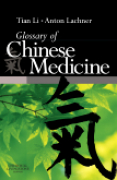
Anyone who learns the skills of acupuncture or who extends his knowledge of TCM is inevitably confronted with terms which hitherto had always meant something different to him or her. Take the use of the word "wind", for example, to refer to a pathogenic factor contributing to illnesses - rather than its sense as a climatic factor.This difficulty is compounded by the fact that, in most books, these terms are not used in a clear and uniform way. One of the many examples is the Chinese term "xu" which is translated as "insufficiency" but alsoas "deficiency" or "severity" and is often not even used consistently within one and the same publication. This glossary presents all the Chinese terms (inChinese characters and in Pinyin script) that are relevant to TCM and provides their English translations. It also provides an explanation of how, for example, the location or the function of an acupuncture point can be concluded from its name. INDICE: I IntroductionThe Chinese languageII Glossary1 Introduction2 Philosophical basis of TCM3 Theoretical basis of TCM 4 Diagnostic methods5 Differential diagnosis in TCM6 Therapeutic principles7 Procedures of TCM8 Acupuncture points9 Special forms of acupuncture10 Choosing acupuncture points, point combinations and chronopuncture11 Chinese drug therapy12 Chinese dietetics 13 Diseases
- ISBN: 978-0-443-06872-0
- Editorial: Churchill Livingstone
- Encuadernacion: Rústica
- Páginas: 408
- Fecha Publicación: 05/11/2010
- Nº Volúmenes: 1
- Idioma: Inglés
